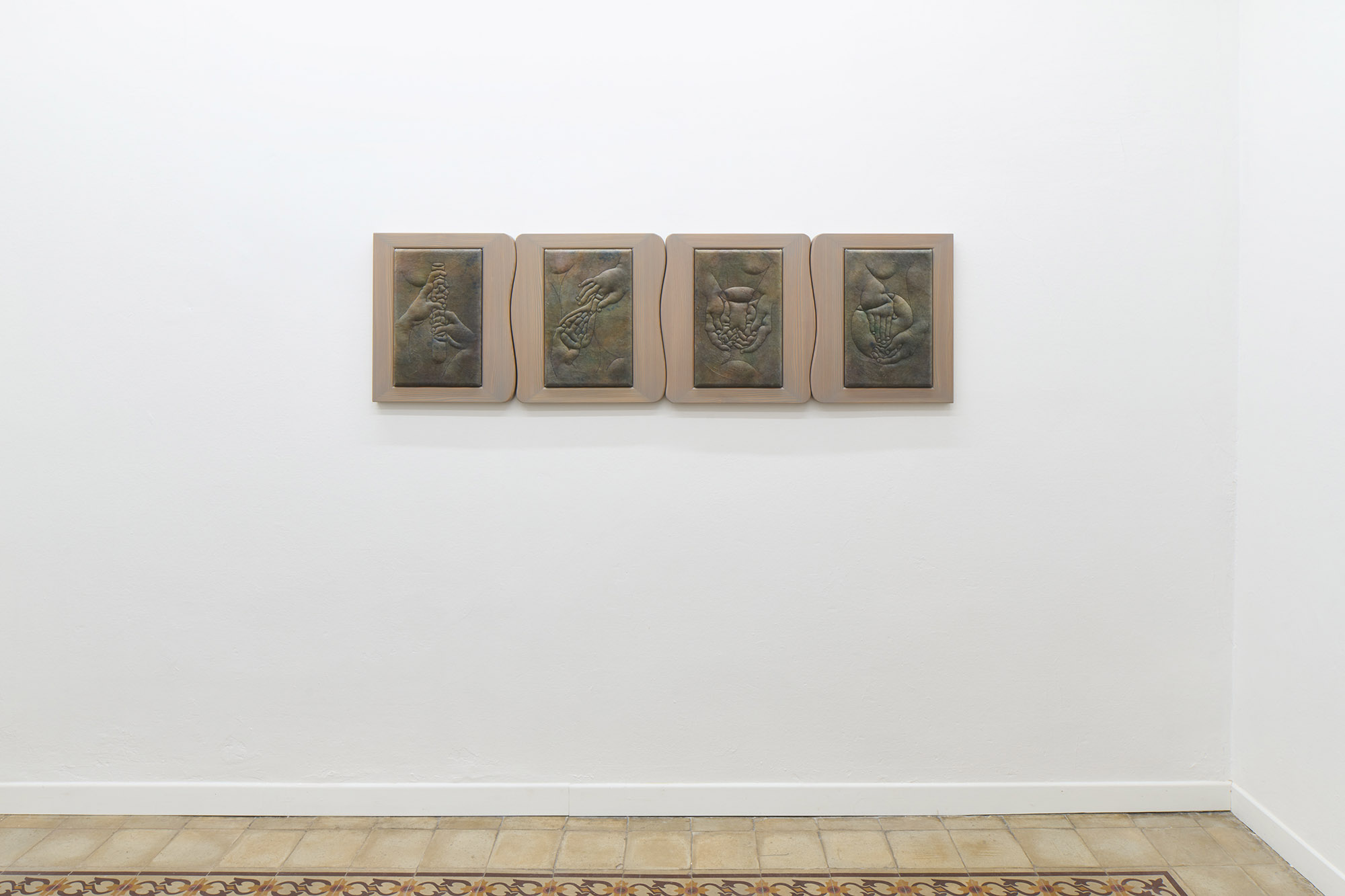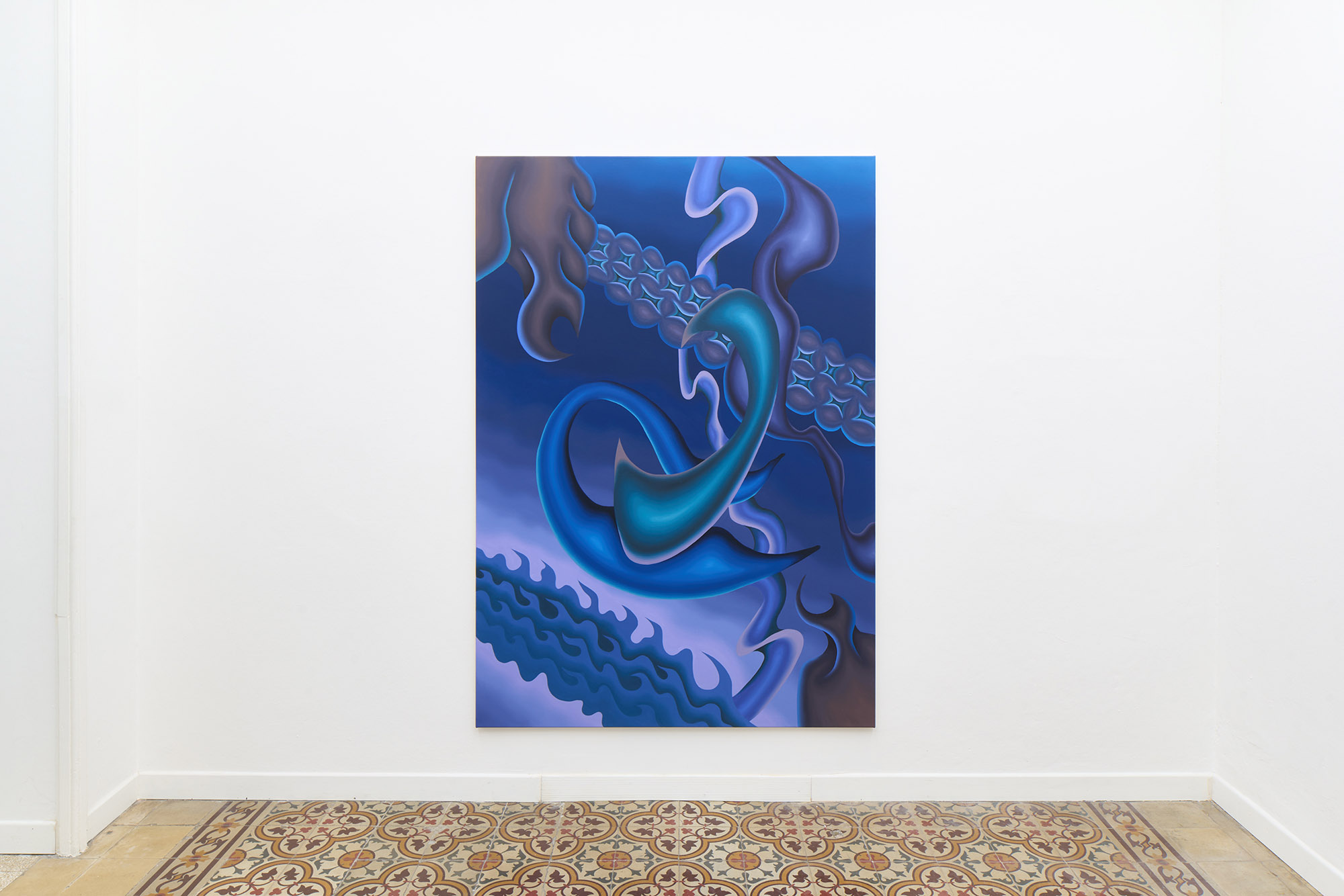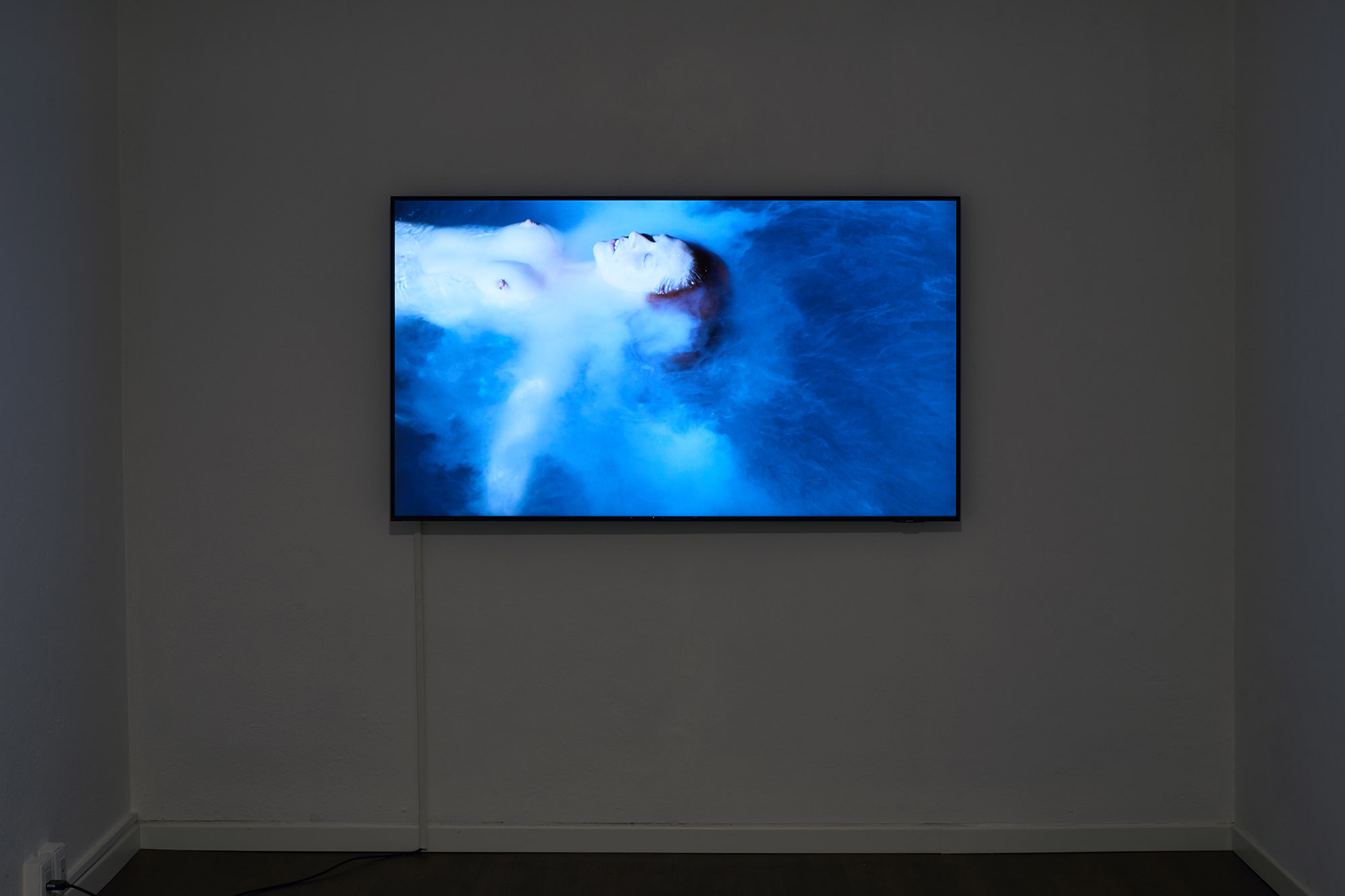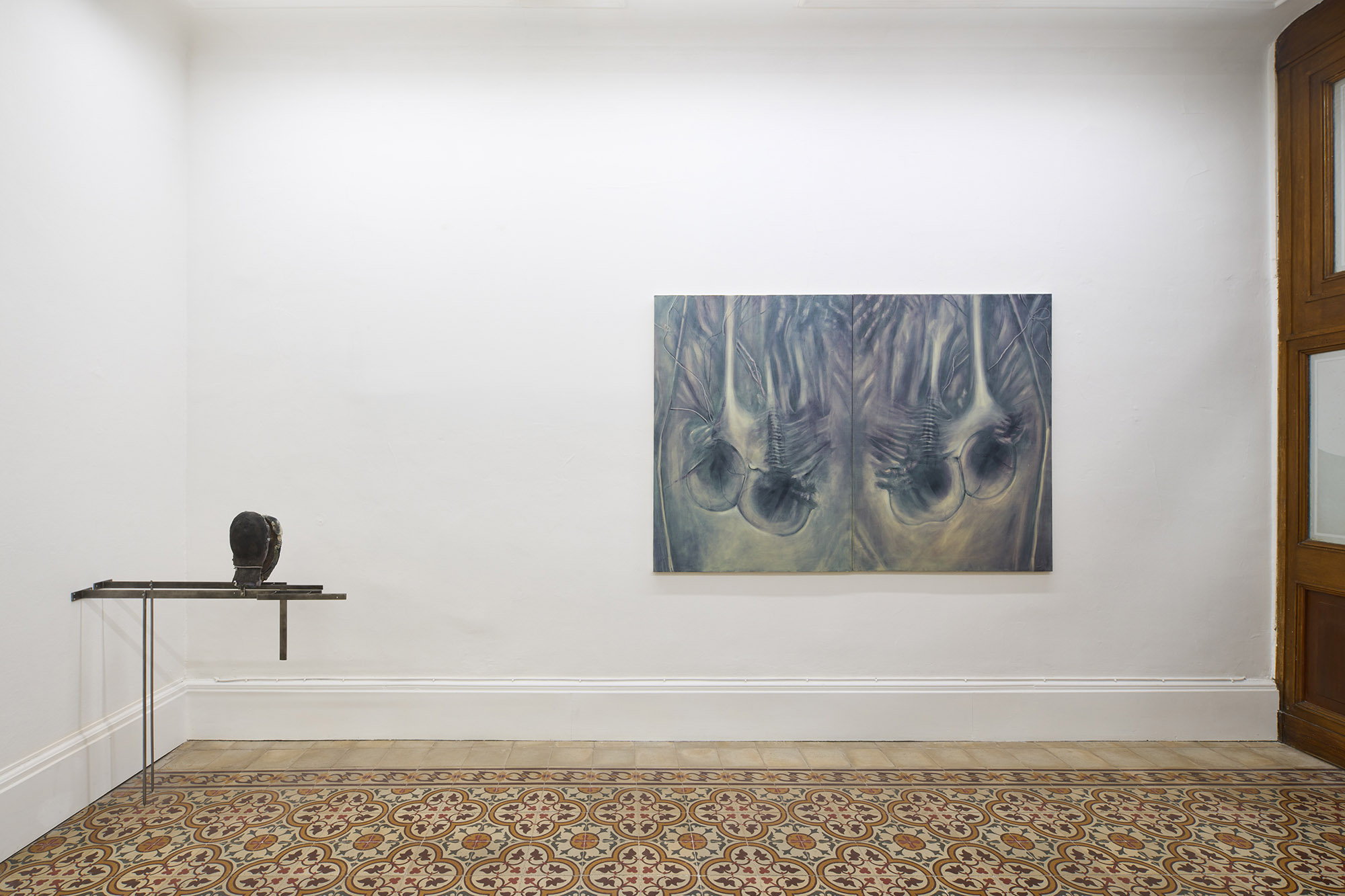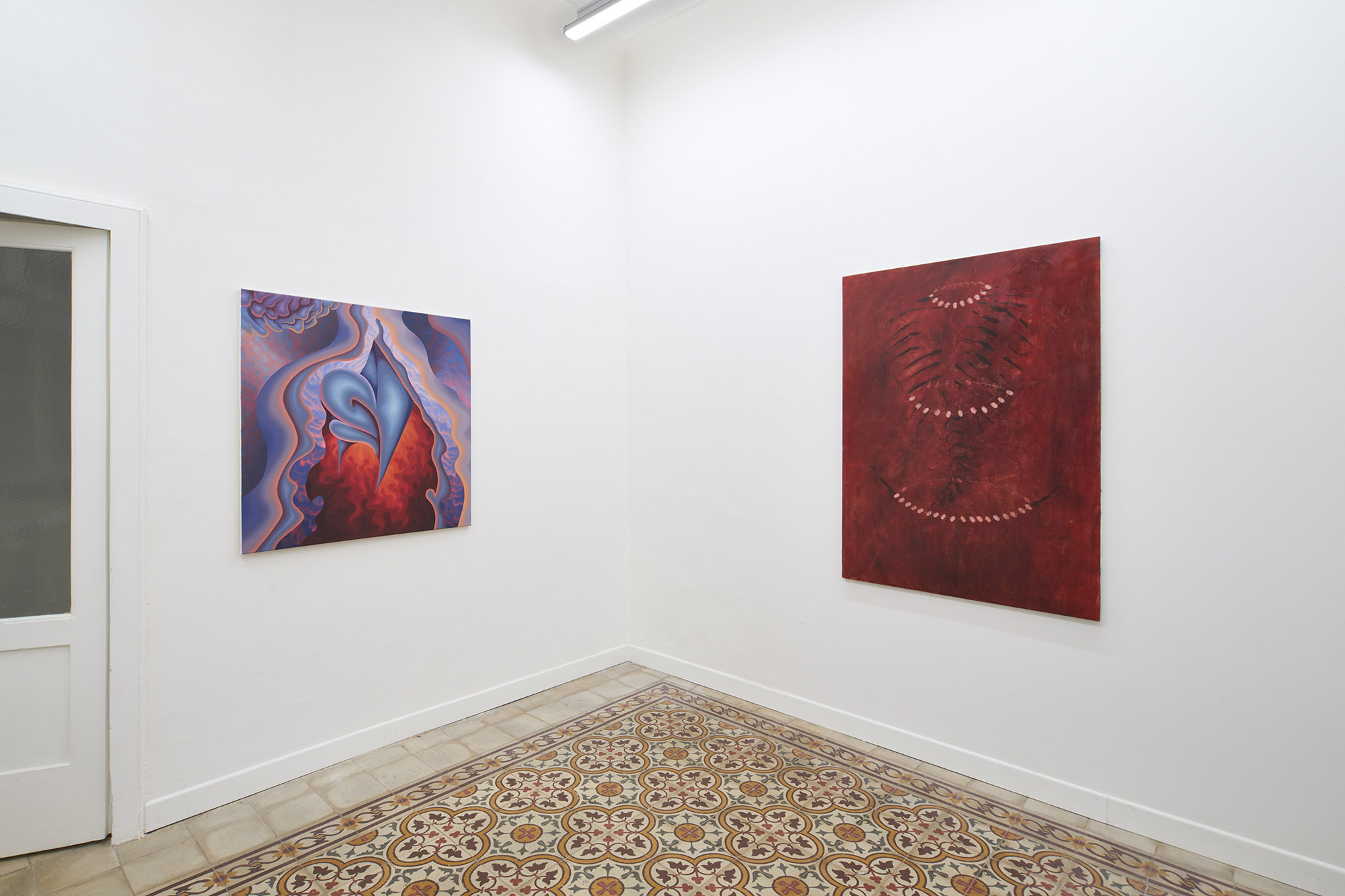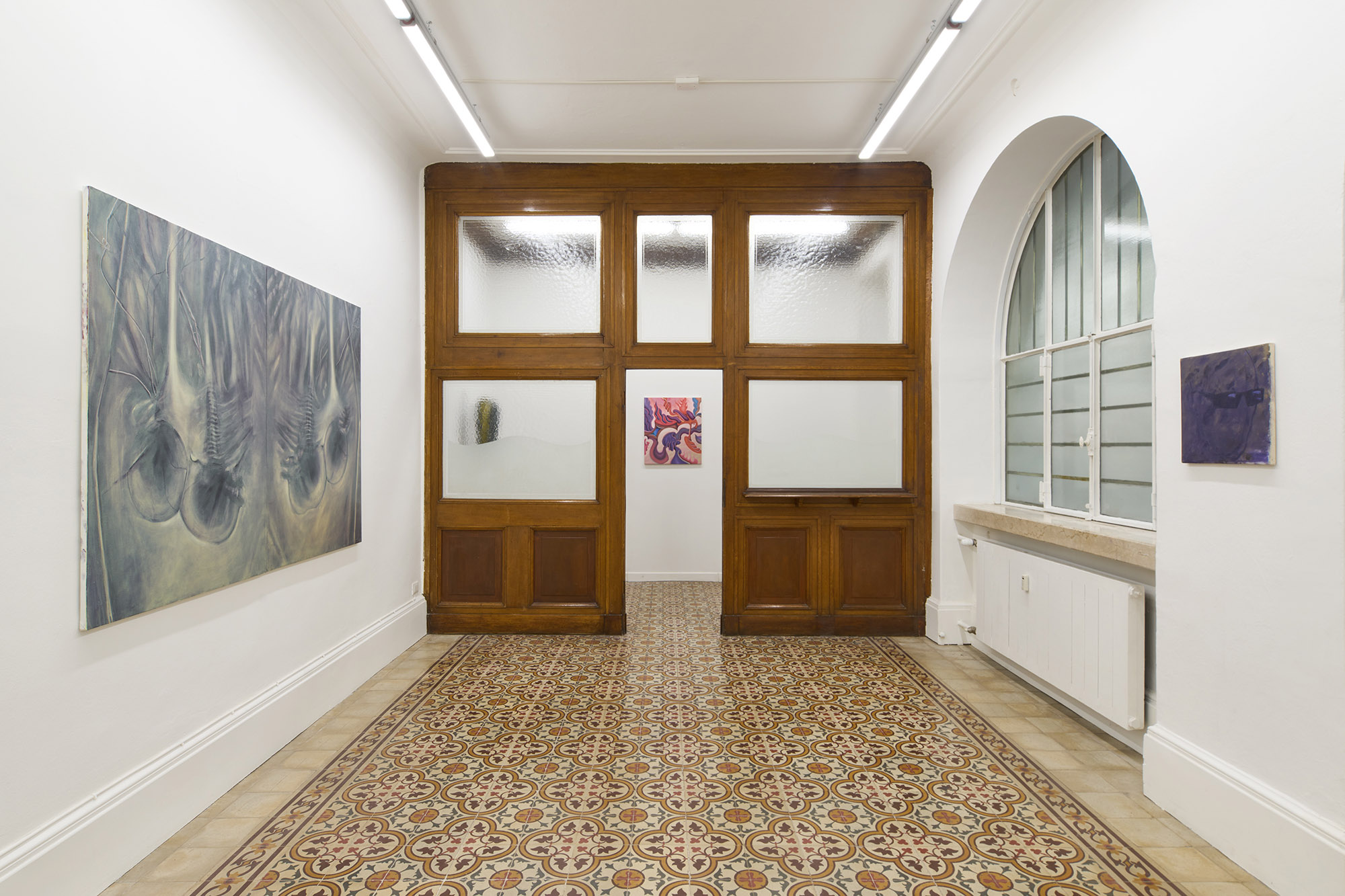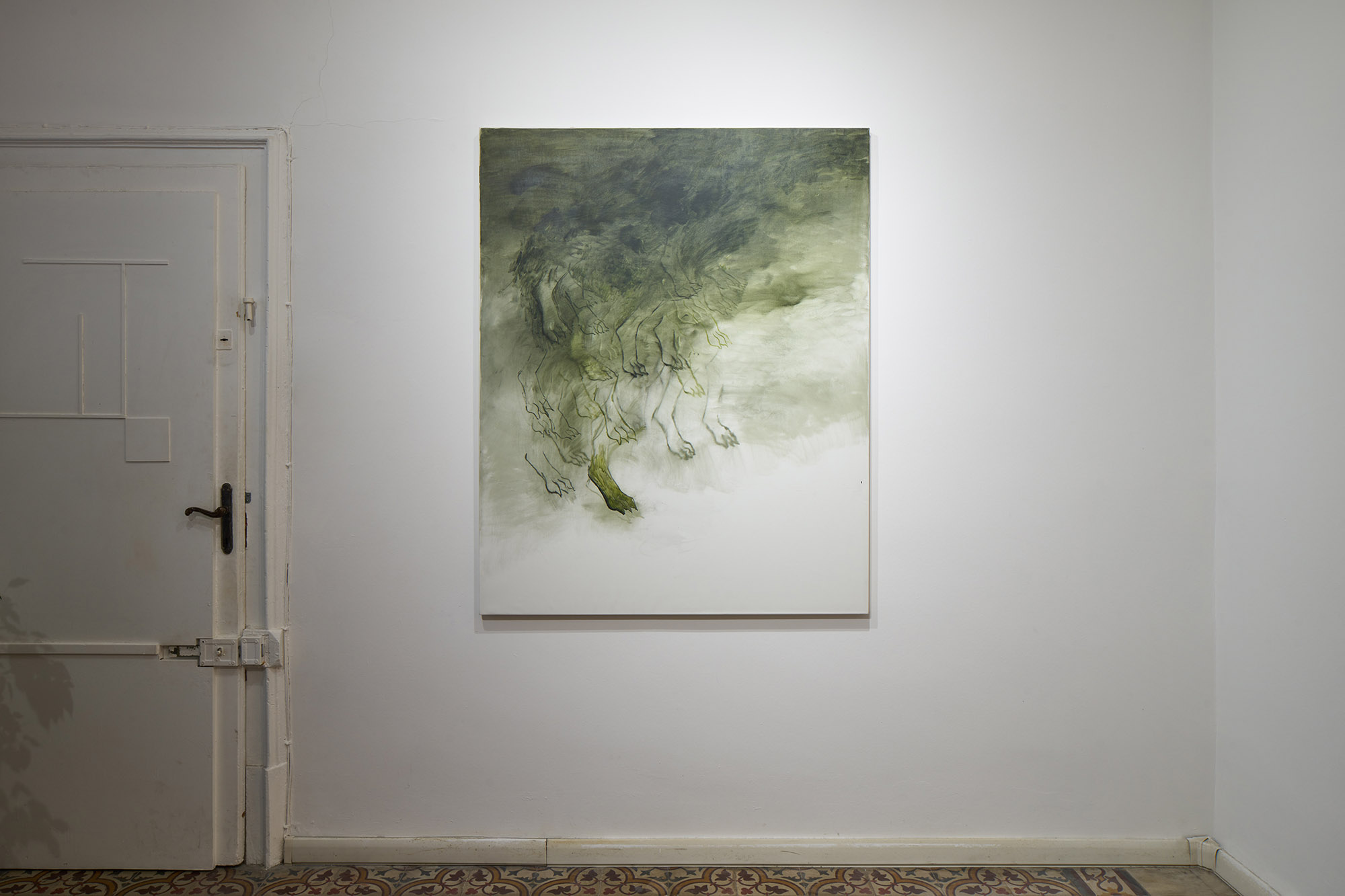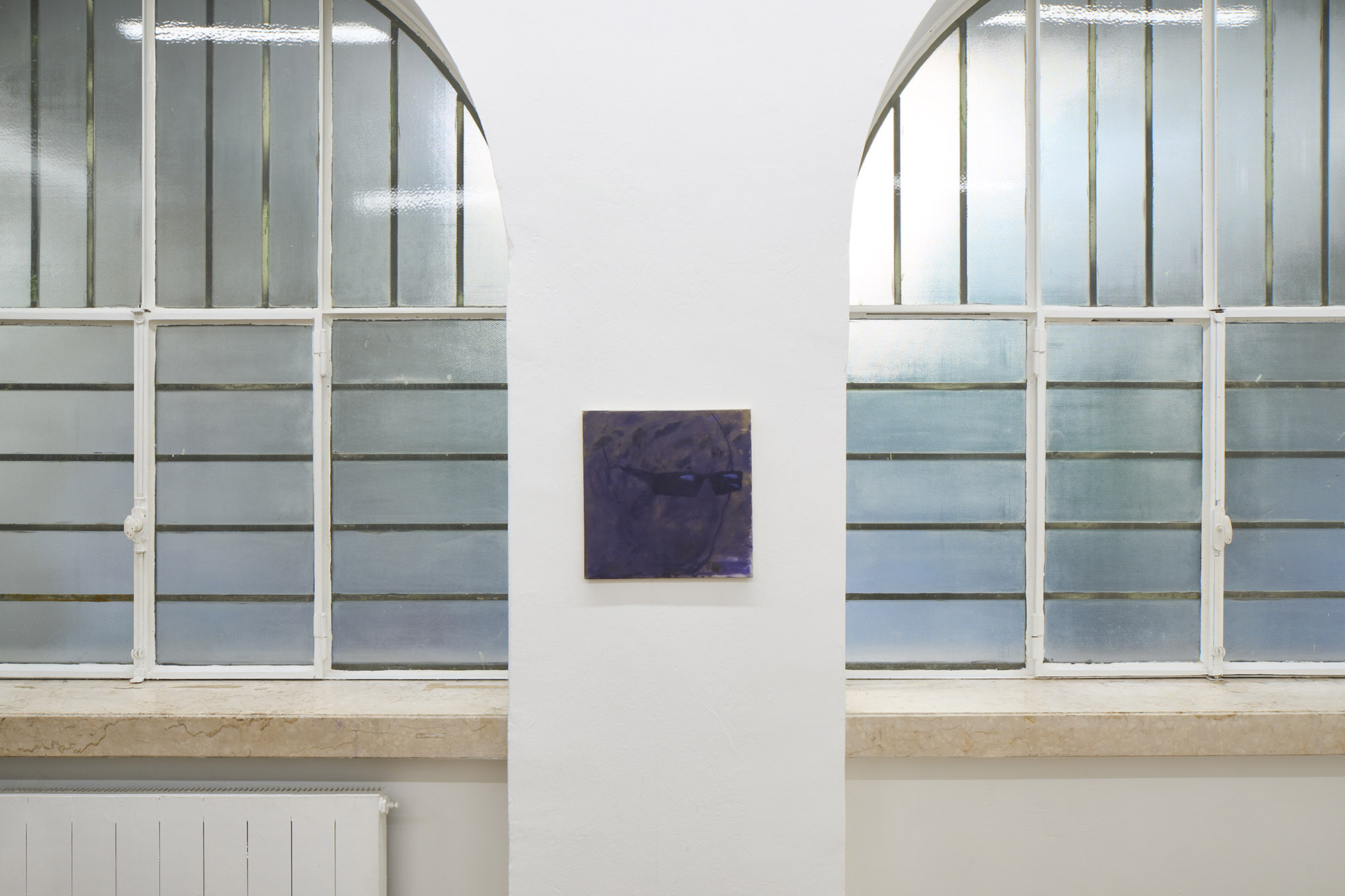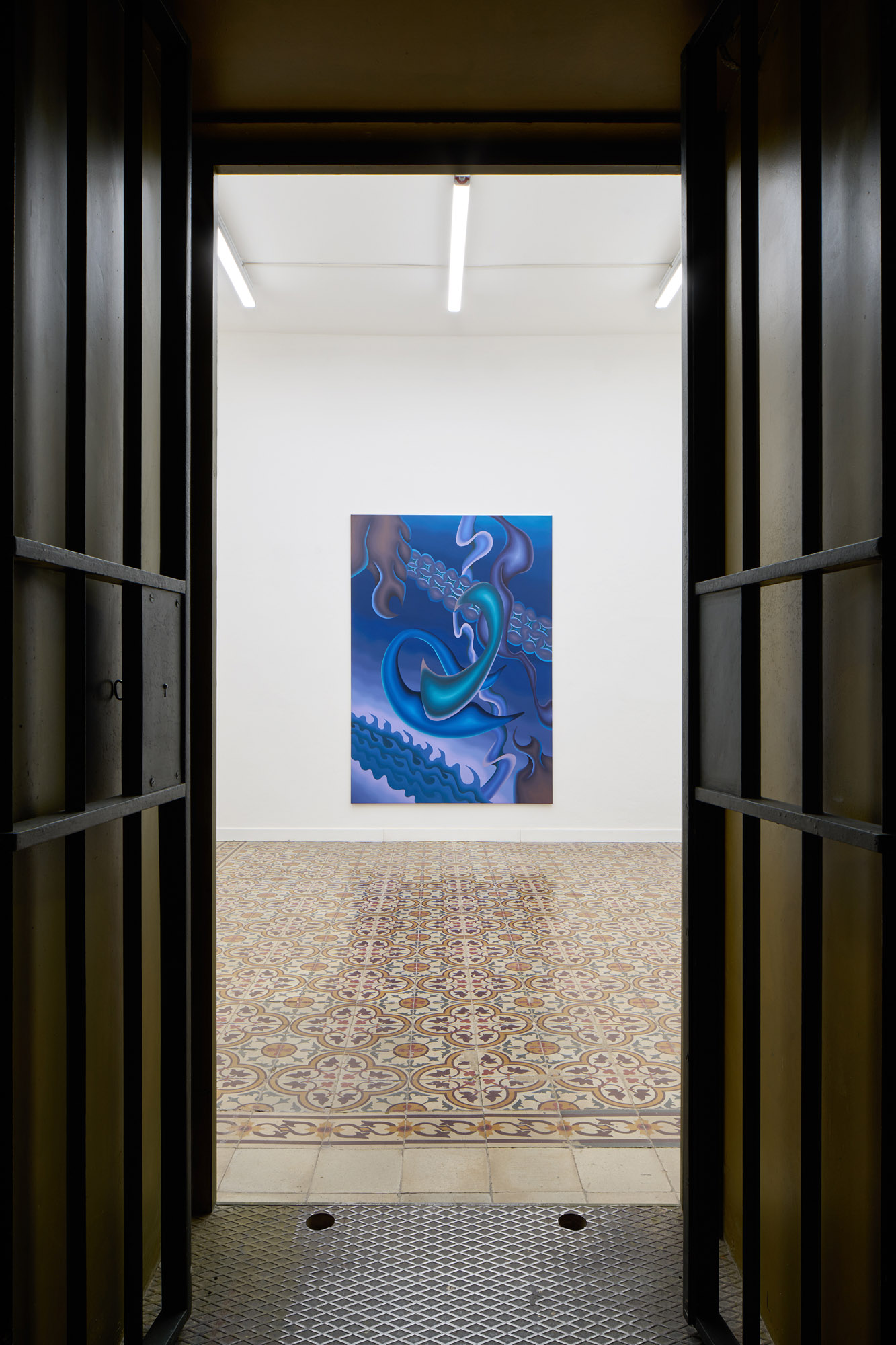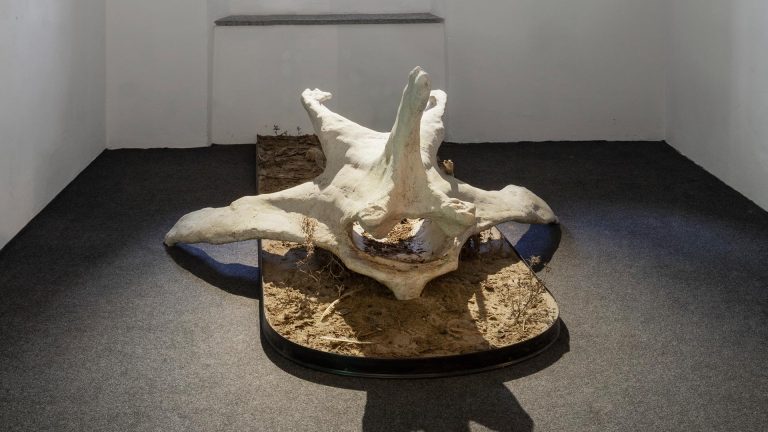Artists: Sophie Spedding, Salomé Chatriot, Ludovica Anversa, Jacopo Naccarato, Antonia Freisburger, Eliška Konečná
Exhibition title: Genesis
Curated by: Edoardo Monti
Venue: The Address, Brescia, Italy
Date: February 16 – April 6, 2023
Photography: all images copyright and courtesy of the artists and The Address, Brescia
Note: Exhibition’s floor plan is available here
We are generated and we generate. The obsession for Creating flows in the veins of all people, since the dawn of time. We’ve got to the point of creating what creates: artificial intelligence, more artificial than intelligent, which task is producing without consciousness. We generate 347 billions of e-mails every day, the same number of photos and videos, countless articles, tens of thousands of songs, 1.3 billions of Instagram posts and who knows how many videos on TikTok. And yet, in this ocean of content, we are still able to be struck by something strong, something that stirs our limb, we remember. Isn’t perhaps born from a man’s hand the famous God’s hand embedded on the ceiling of the Cappella Sistina, and what about Adam’s hand? The invitation is not to lose ourself in the sea of contents, online and analogic, to search for beauty, a word nearly deemed offensive in the descriptive process of art works, but a word that I consider a vessel of an unsettling candor. And the beauty, the strong, the visceral, the powerful, the meaningful are located in the works of six artists invited for Genesis; a Latin term, this last one, born itself from ancient Greek, and before that from Proto-Indo-European. The word, forged from the concept of birth and production, probably has an even more ancient origin and will continue to evolve in the future. In this path, we explore the practice of six artists born at the end of the Twentieth century, generating a dialogue between them, focusing on the acted and on what pushes them to create, day after day. They generate content but also thoughts, parallel words and figures that populate an imaginary imagined. We search for bridges and links between each work, abandoning ourselves to the subconscious: nothing is objectively announced, each one of us can establish his own solution to the problem we call Life.
Sophie Spedding (London, 1995) invites us to enter into her painting embracing precise themes. Her works explore the tension between various ideas, creating areas of reconciliation, balancing references and quick and approximate pictorial gestures, introducing them to role-play, the scenic representation of a personal interaction that leads to an imaginary situation. The artworks explore a duality in the use of space; to create a new point of view towards which we are attracted and form which we are introduced to the subject depicted, in order to transform the spectator into the chosen victim of the narration. In this way, heterotopias are made, and they show themselves with a hyperbolic saturation and abstraction, through the intimacy of the scale adopted, depicting scenes and post-human characters.
The artistic work by Salomé Chatriot (France, 1995) is focused on the creation of physical and virtual spaces at the same time: it builds machines and installations where electronic sculptures and digital images coexist. Fascinated by the way in which science handles the human body, through data’s objectivity, she utilizes her version of the future and new technologies to mold a smooth identity, digital and embellished with shimmering textures. The ecosystems produced by Chatriot always wear signs of healing from turbulent past. The well-being that she tries to communicate, often implies the spreading in real time of organic streams like breathing, circulation of fluids, and chemical and alchemical transformations.
The paintings by Ludovica Anversa (Milan, 1996) explore a territory at the boundary between figuration and abstraction, incorporating personal images next to theorical and visual hybrid referrals, without ever relating to a linear narration: figuration and abstraction enter into dialogue, linked by blurred boundaries. The inspiration process is focused on sources that are not considered purely artistic, drawing from different scientific, archeological and photographic images. “Like those animals that sacrifice a part of their body to distract a predator, often in my works the figure negates itself to the sight, and concedes only partially, in the shape of tracks or waste hallucinated on the surface”. The vulnerability and the relationship between perception and representation of the body are recurring themes in her work. The creative process is deep-rooted to the idea of deconstructions and layering, generating a continuous shift between presence and absence, suggestive potential and image’s denial. The figures living in her paintings are creepy and metamorphic presences, that coexist by revealing an underground complexity, by getting contaminated without being wiped out.
Jacopo Naccarato (Arezzo, 1995) works with the purpose to ask the right questions, rather than give absolute answers. The process implies a solid start, beliefs that are innate or absorbed over time, that are systematically deconstructed and doubted. Frequently his focus is put on the figure, on the individual as a unique being, perfect in his flaws. He doesn’t make logical explanations, he’d rather penetrate into enigmatic terrains that need to be lived in order to assimilate and comprehend them – an individual comprehension, not a universal one. “The absence of a dream is not a misunderstanding, the enigma is the language of wisdom, surprise is an emotion”. By practicing the art of sculpture and painting, he adopts an intuitive approach, with the hopeful aim of generating new subjects, new shapes.
Antonia Freisburger (Germany, 1990) aims to leave her own reality and enter into a definitive and calming reign of existence. Following rigid rules of painting, invented by herself, the artist reaches a profound and timeless sense of origin, a state of clarity such that humanity appears denied by its body shape. Freisburger’s paintings encourage you to visit an area that is everywhere and nowhere, where the laws of nature are boundless: a place that has not one single truth. Freisburger’s work draws inspiration from traditional science fiction, considered by the artist as something more than a funny and necessary simple way to contemplate the development of humanity over time. Without mentioning and directly reproducing specifical elements in this field, her paintings are placed in an anti- materialistic world, an approach of which there’s an extreme need, in the capitalistic reality in which we live today, and create hope for the future to come.
Eliška Konečná (Czech Republic, 1992) generates soft and fluffy works starting from an effort to show the untouchable abstract realty, that she interprets in the material dimension. Alternative materials and techniques like wood’s carving or embroidery are at the heart of her artistic quest. We are invited to dive in the world of her hand- crafted products, balanced on the fleeting border, between vigil and wake, tactile and immaterial universe. The fluctuant shapes of her wooden or soft bas-reliefs often underline the body’s transgression and her visive narrations, linked to corporeality, perceived through the prism of wishes and urges. Konečná’s work comes from this effort to emphasize the intangible abstract reality, that she transforms in a tangible dimension. The alternative techniques and materials lie wood’s carving and embroidery, previously marginalized and belonging to a quite artisan and decorative artistic tradition, are at the center of her artistic pursuit.



